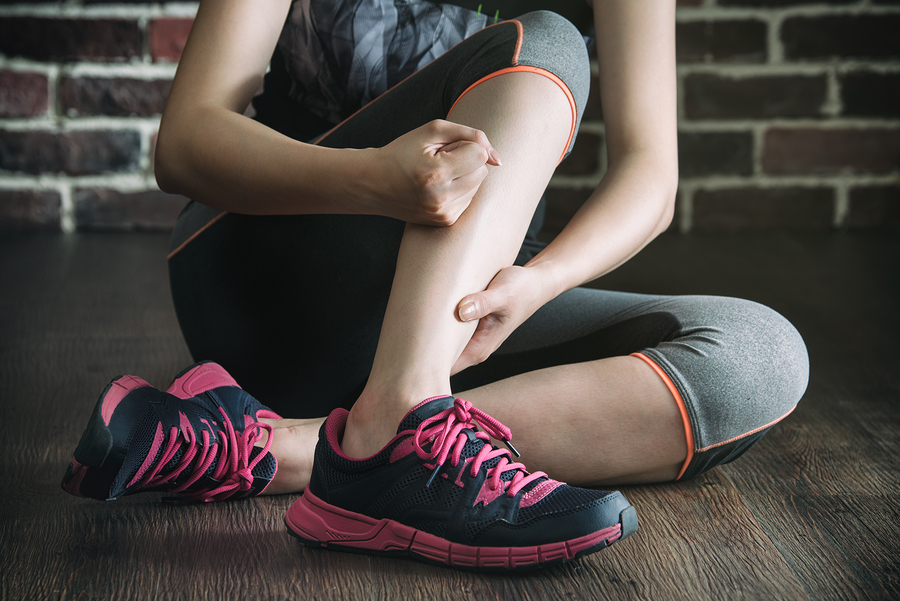Ankle Physiotherapy
Ankle sprains are common injuries that occur when the foot is twisted or rotated beyond its normal range of motion, causing the ankle ligaments sobrecargen or tearing.
The people who have a higher risk of an ankle sprain are younger athletes, members of the military and anyone who frequently runs, jumps and changes direction quickly while doing an athletic activity.
Physiotherapists in Melbourne help people who have experienced ankle sprains to reduce their pain, recover their strength, movement and balance, return to normal levels of activity and avoid injury again.

Ankle Sprain – How It Occurs
Usually, a sprained ankle takes between 2 weeks to 2 months to heal. The ankle will feel better after a few weeks, and will be fully strengthened in a few months. However, a severely injured ligament can take between 9 months and 1 year to heal.
Recurrent ankle sprains are common since statistically 73% of people who have suffered a sprained ankle suffer another at the end of their lives. This is especially likely if muscle strength and balance are not fully restored or improve beyond pre-injury levels.
After a sprained ankle you may experience pain, swelling, inability to stand or walk on the affected foot, stiffness, weakness and feeling of instability in the ankle joint. Depending on how damaged a ligament is or how many ligaments are injured, your ankle sprain can be classified as:
Grade 1 (mild): the ligament is overloaded.
Grade 2 (moderate): the ligament is overloaded or partially broken.
Grade 3 (severe): the ligament is completely torn.
Why Do YoU need an Ankle Physiotherapy
Physiotherapists help people with ankle sprains recover more quickly than they would without treatment. The time it takes to cure an ankle sprain varies, but results can often be achieved between 2 to 8 weeks. Your physiotherapist will work with you to design a specific treatment program that meets your needs and goals.
During the first 24 to 48 hours after your diagnosis, your physiotherapist can advise you to:
– Rest the area avoiding any activity that causes pain.
– Apply ice packs to the area for 15 to 20 minutes every 2 hours.
– Consult a doctor for more services, such as medications or diagnostic tests.
– Walk on the affected foot as soon, and as much as possible, without making the pain or swelling worse.
– Use crutches or other walking aids to help relieve pain and maintain balance.
– Rest your ankle or use an orthosis to prevent inflammation and give better support and support to the ankle.
These self-treatments will allow you to be as active as possible with the least amount of pain helping to accelerate healing compared to total rest.
Objectives of physiotherapy treatment for ankle sprain
Your physiotherapist will work with you to:
Reduce pain and inflammation : you will learn how to avoid or modify your daily and sports activities to allow healing to begin. The physiotherapist can apply different types of treatments to achieve this goal including ice, heat, ultrasound, electrical stimulation, bandages, specific exercises and manual therapy.
Improve movement : your physiotherapist will choose specific activities and treatments to help restore normal movement in the ankle. These can begin with passive movements that the physiotherapist will perform on your ankle progressing to active exercises and stretches that you yourself will perform.
Improve strength : Ankle sprains may be related to weak, injured or uncoordinated leg muscles. Your physiotherapist will teach you the correct exercises and the equipment to use, to restore your strength progressively and safely.
Improve endurance : recovering muscular resistance of the leg and ankle is important after an injury. Your physiotherapist will teach you various exercises to achieve this goal through the use of cardio equipment such as treadmills or stationary bicycles.
Improve balance and agility : recover your sense of balance, speed and accuracy of the movements of the legs and ankles is important in many daily activities. Your physiotherapist will teach you to recover these skills in preparation for a return to sports and your daily routine.

 1300 392 552
1300 392 552